Computers that can lip-read, a robot that follows your brain waves, prosthetic arms controlled by thinking about fingers that have been amputated, the future of nuclear fusion, Bandaids for batteries, why oral cancer rates are up 200% on 20 years ago and a brain stimulator for obsessive compulsive disorder. While the team take a well-earned Easter break, join Dr Chris for a look at the latest science from the AAAS in Washington DC.
In this episode
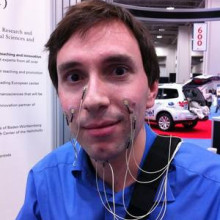
00:50 - Giving a Voice to Silent Speech
Giving a Voice to Silent Speech
with Michael Wand, Karlsruhe Institute of Technology
Synthesised male voice - The recogniser interprets my muscle movements therefore I can talk to you by simply mouthing words. Do you have any questions?
Chris - Can you now introduce yourself for me, so who you are and tell us what it is you've actually developed that we’ve just been listening to?
Michael - My name is Michael Wand and I am from the Karlsruhe Institute of Technology which is the largest Research Institution in Germany. So the system we’ve just been listening to is a system for silent recognition of speech. What we do, we put little electrodes on our faces. This technology is called surface electromyography because it catches the myo signals, the muscle signals, from my face. And from these signals, we can retrace what has been said.
Chris - So the computer is recording the electrical signals coming off of each of the muscles as you speak and it’s working out, based on the pattern of muscle activity, what you must've said.
Michael - That's exactly right. So the signal which one can actually see on the screen is fed into the statistical recogniser which recognises the pattern of the muscular activity and can retrace what was said.
Chris - So you must've trained this to recognise the pattern of movements you would make when speaking. So if I took the electrodes off of your face (and they're decorated all around your mouth, picking up all the major muscles I presume) then it wouldn’t recognise what I was saying in the same way as it recognises what you're saying.
Michael - That's correct. This system is geared towards me. If someone else wanted to use it, it would require a few minutes of recordings just to adapt itself.
Chris - So it’s quite quick then. You can train it relatively fast.
Michael - That's true, yes. The systems we present are based on about 5, 6, 7 minutes of training which actually works quite well for a sort of limited vocabulary. The more training data I put into the system, the better it gets. Our best system which we didn’t bring today, takes about 45 minutes of training, which is akin to a conventional speech recogniser that you can buy in a shop and that recognises about 2,000 words so it's not – maybe not quite as good as a traditional speech recogniser, but is perfectly suitable for communication without actually being heard.
Chris - Now it’s interesting because you're from Germany, but you're speaking to me in English. So you've trained this in English presumably.
Michael - Yes. We’ve trained this system in English because we are a very international institute and we came here in Washington DC just to present it. It’s in principle not a problem to adapt such a system to any other language. It will just mean essentially changing the dictionary of pronunciation, telling the system how German is pronounced and then probably re-training it because German has got different sounds to English and then it works for any other language, French, Spanish, whatever you get.
Chris - Who do you see using this? Who is this targeted at or what sort of market would this go into?
Michael - So right now, it’s still a research project since we’re a university, but there’s a huge body of interest; from one side from those people who have lost their voices. There is a quite large group of larynx cancer patients out there and they can usually move their mouths quite normally, but there is a lack of sound source because their larynx has essentially been cut away and these people are very, very eager to get their voices back. There's a huge interest for them for using the system, no matter what it looks like, it’s going to look much better in the future of course. But they’d certainly be willing to use such a system. And as our market would really be having a system which is a bit nicer, like a little electrode head set which you can just put on, then I might use the system for instance to augment my cell phone, and then I could just use it when I get a phone call when I'm in a meeting, just to communicate silently.
Chris - So no more shouting on trains.
Michael - Exactly, yes.
Chris - The only problem that I can see at the moment is that it does make you look rather strange.
Michael - Well currently, we are working on different kinds of electrodes together with our cooperation partners from industry and from science, and they are going to look different in the future. Right now, we are looking into electrode technologies and multi-electrode technologies which might make it possible to use much less electrodes and get a much better signal which will also improve accuracy, and make the system more robust. What we might use is a system where I put on a kind of headset which looks just like a normal microphone headset, and nonetheless contains electrodes. I can see this in about 2 to 3 years time.

05:30 - How to Stop a Robot from Wandering off when your Mind Wanders
How to Stop a Robot from Wandering off when your Mind Wanders
with Jose del Millan, Michele Tavella, Ecole Polytechnique Federale de Lausanne
Chris - I've just met a robot driving itself down a hall pursued by two people, one of whom was wearing a hat covered in electrodes. The other was Swiss Scientist Jose del Millan...
Jose - There is a general problem of providing people the capability to control prosthetic devices, like small robot wheelchairs, by decoding the electrical activity of the brain that they can generate spontaneously as they execute different mental tasks related to motor movements. So this is the general problem. The specific progress that we are reporting here today is the fact that through appropriate probabilistic methods, we are able to decode when people want to intentionally deliver the command and when they don't want to deliver any commands. So the robot keeps doing whatever it is doing, for example moving forward or staying stationary in front of a target.
Chris - First of all, let's look at how you actually use the power of thought to control a robot. How are you actually doing that?
Jose - What we do is to record the so-called electroencephalogram, this is done by simply putting in contact some electrodes on top of the head. Then we are using sophisticated algorithms to find patterns, prototypical patterns of electrical activity in the brain that are associated with the different mental commands that people want to deliver to the prosthetic device.
Chris - And Michele, you're wearing a hat with all these electrodes on. How does it work?
Michele - Well, the hat is very simple. It's a very light hat. We use some gel to be sure we provide a contact and by imagining moving my right hand or my left hand I can give right and left hand commands. As soon as the computer accumulates enough evidence about the fact they're really willing to perform right or left then a command is delivered, and the robot turns, for instance.
Chris - So you think 'I want to move my right hand', this changes the activity of certain parts of the brain which is reflected in a change in the signal picked up from the scalp by the electrodes, the computer can decode that.
Michele - The most important thing is that - what you said is that this process of imaging these movements is really, really easy. It's really, really spontaneous. Everybody can do it quite quickly. We don't need long periods of training actually. Usually a couple of hours are enough.
Chris - How do you then translate what the computer hears in terms of the electric signals, into what the robot does?
Michele - We continuously classify the information extracted statistically then a command is delivered to the robot. But the robot is smart, so it's not simply executing it. It has some extra sensors that are designed to allow easier navigation. For instance, we've put in cameras and we have an obstacle detection system. The robot tends to dock itself automatically as soon as he understands if it's in front of a person, and we have other kinds of proximity sensors to avoid obstacles automatically.
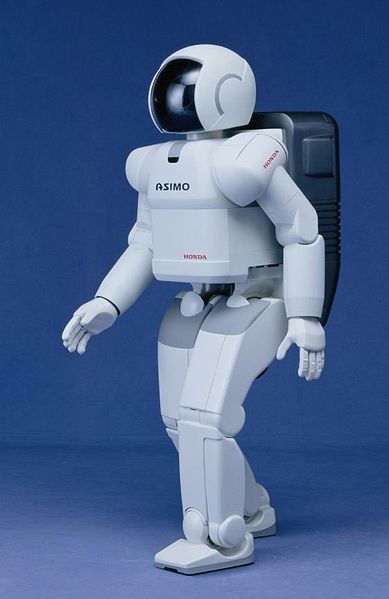
Chris - In the real world of course, someone wouldn't be able to think in excruciating detail all the time about the trajectory or the movement they want to make. So the robot's sort of doing some bits automatically and you can influence them.
Michele - Exactly. So it's not that we are competing. I'm not competing with the robot, but the robot is providing a continuous high quality aid to my task of navigating the environment and I'm interacting with this modality of automatic navigation.
Chris - How long did it take you to learn to control the robot like this?
Michele - The first time I tried, when we were building all the system, it took me a couple of hours to be able to control it well, robot wheelchairs, keyboards, whatever. And it's not just for me. I mean, I'm here today but we have many more subjects and patients that can actually control the very same devices with very high accuracy, and speed.
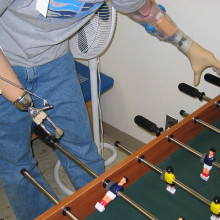
09:41 - Phantom Limbs controlling Prosthetic Limbs
Phantom Limbs controlling Prosthetic Limbs
with Dr Martin Baechler, Dr Todd Kuiken (Rehabilitation Institute of Chicago), Glen Lehman
Chris - What happens if a patient loses a body part? Can an artificial replacement be wired back up to the brain so it can be controlled? Todd Kuiken is pioneering this approach at the University of Chicago and I met him, together with his patient Glen Layman, and surgeon Martin Bachelor...
Todd - Our big challenge is how to control an artificial limb. You lose your arm and we can make robotic limbs, but how do you tell it what to do? So we've developed a technique that we call targeted muscle re-innervation where we've developed a neural interface to capture what the person wants to do with their limb. Essentially, the way it works is we take the major nerves that used to go to the amputated arm, and they're still functional. They send motor commands, and if you'll stimulate them, you'll feel the missing arm. So we take those nerves and we transfer them to some spare muscles in the residual limb. Those nerves will then grow into those muscles and when they - Glenn for example - thinks to close his hand, now his medial biceps contracts, and we can detect a signal from that muscle contraction and tell his artificial hand to close. In this way, we can get much more function and its intuitive. He thinks to close his hand. His hand closes.
 Chris - Glenn, can you give us a demonstration?
Chris - Glenn, can you give us a demonstration?
Glen - I can.
Chris - First of all, talk us through what actually happened to you and how long have you been using the prosthesis you've got?
Glen - November 1st, 2008, I lost my arm. I was on a combat patrol in Iraq, they threw an RKG-3 hand grenade at my truck, it penetrated the armour and separated or amputated my arm. After that, I was evacuated and sent through Walter Reed where I received treatment. Dr. Baechler and Dr. Kuiken came to me and asked me if I would be a candidate for the targeted muscle re-innervation surgery, and then just this last week, I received this arm or went out to IRC in Chicago, and trained with them with this arm.
Chris - Can you show us what it can do?
Glen - I can raise them lower the elbow, I can rotate the hand, so it's in our out. I can open and close the hand, and I can flex the wrist either in or out. Those movements were all controlled by me, thinking about my phantom limb.
Chris - So you're thinking about moving fingers that you no longer have, but are present on the prosthesis obviously, and those thoughts are being translated into what the prosthesis does.
Glen - Yes, that's correct.
Chris - Is it easy to learn to do?
Glen - I've only used this arm for two weeks, so it was very easy.
Chris - What sort of resolution of movements can you manage? If I gave you some peas to pick up, could you do that?
Glen - I believe I could, yes. The larger the item, the easier it is to actually grasp. I mean, a bottle of water or something like that is easier. It's very hard to pinch things off the table.
Chris - If you didn't have this, what would you have instead and in what way has this enriched your life?
Glen - I would just have a conventional arm. I would be able to operate the elbow and the hand, but it wouldn't be simultaneous. I would only be able to cycle through each thing by switching co-contracting muscles. So it's like the comparison between a minivan and a sports car. It's different categories.
Chris - Martin [Baechler], you had to do some of the surgery to make this feasible. What's actually involved in implementing a prosthesis like this in terms of actually rerouting the nerves to muscles and so on?
Martin - Well the performance of the surgery is actually very simple. The anatomy is predictable and the procedures of transferring the severed nerve to a healthy piece of muscle is quite simple.
Chris - How long does it take patients to actually begin to use and work one of these prostheses?
Martin - Well since we put the severed nerve so close to the new muscle, it only takes a couple of months before we start getting some contraction of the muscle. It may take six months or maybe even a year before it fully matures and the connection between the brain and that newly innervated muscle is plateaued and it's what's going to be.
Chris - Just coming back to you Todd, in terms of actually how the process works, so there are actually, physically, electrodes which are listening to what the muscle is doing when Glen thinks what he wants to do.
Todd - That's correct. We have sets of little electrodes that are like antennas, listening to his muscles.
Chris - If he had had his injury 20 years ago compared to very, very recently - you got to him when it was a fresh injury, would that have made a difference to whether this could be done?
Todd - It may have. The answer isn't really known. We're comfortable doing the surgery for 5 or 10 years after injury in a younger patient, but there may be a limit someday that we'll find, that we don't want to cross over. We know that the nerves are still viable for decades after the injury, but how good they are at regenerating is a question.
Chris - And what about sensation because at the moment, he obviously can see what he's doing, but he can't feel what he's doing. What about taking it into that domain next?
Todd - We have been able to provide hand sensation for some of our amputees. What we do is cut the nerve to the skin over these nerve transfers and then the hand sensation nerves will grow into this residual limb skin. So when you touch it, it feels like your touching the missing hand. It's very exciting for us because it gives us potential of putting sensors in the prosthesis to see when you touch something or how hard you're squeezing and feed that information back, so that the patient feels that they're getting that touch or pressure on their missing hand.
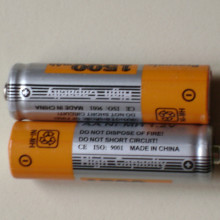
15:37 - Keeping Batteries Charging...
Keeping Batteries Charging...
with Scott White, University of Illinois
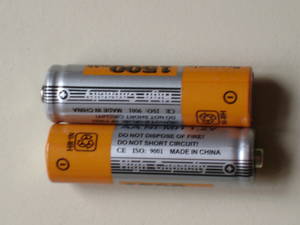 Chris - We've probably all had the problem of the rechargeable battery that lasts less and less long after each recharge. Usually it's terminal (sorry about the pun) and the battery has to be replaced, which is not ideal given how much they can cost. But now help is at hand, with the equivalent of an internal plaster for a battery. Here's Scott White:
Chris - We've probably all had the problem of the rechargeable battery that lasts less and less long after each recharge. Usually it's terminal (sorry about the pun) and the battery has to be replaced, which is not ideal given how much they can cost. But now help is at hand, with the equivalent of an internal plaster for a battery. Here's Scott White:
Scott - In a nutshell what we do is we put things into batteries that make them perform much better and a lot safer. These little things that we put in are microcapsules - very tiny capsules that you can think of as being like 'drugs'. And inside these capsules are special materials that when they get released, make the battery healthy and last longer and be a lot safer.
Chris - When you say "last longer", you're not just talking about how batteries go flat because they've run out of juice, you mean how their ability to recharge and discharge decays with time?
Scott - Exactly, well put. We would like batteries to last ten years. But they don't because of the charge and discharge cycling that we do to them.
Chris - What's actually happening - if I were to zoom in inside the battery with some kind of very powerful microscope and I could physically see inside the battery at a molecular level - what's going on to make my batteries last less long as they age?
Scott - There's a lot of things happening. Probably the simplest way to explain it is that there are small cracks that open up inside the battery. So physically, particles are breaking and two layers of different materials are separating. There's all kinds of interesting electrochemical reactions that are undergoing at the same time, but physically particles break, things separate, interfaces build up, and the end result is that the battery can no longer give you the power that you need.
Chris - But all of the ingredients are still in there, and so if you could stop that happening you'd have a battery that did continue to perform well. So what you're saying is that your work is dedicated to stopping that decay happening in that way?
Scott - Exactly. We're giving it a dose of loving medicine when it needs it. So when little cracks open up, we put things in there that heal those cracks so you're battery is like new.
Chris - OK, well could you explain that then in slightly more detail. So you are literally doping the electrodes with stuff so that if an area breaks it repairs itself. This is, I suppose, like those self-repairing car paints, where there are little capsules of various things, and when they get exposed by the paint being damaged they 'heal' the paint. You're doing the same with batteries?
Scott - Exactly, in fact we started with the very work that you're talking about - self-healing coating, self-healing paint, self-healing polymers. And in those systems we would put microcapsules in that would release a monomer, which is a polymer precursor, that would eventually heal that crack. So now we've translated that technology into batteries. The materials that we deliver to the batteries are of course completely different, they have different intended functions, but it's still predicated on the same thing: we have a capsule with a very thin wall, you can think of it as being like an egg shell, and inside our eggs are materials that will lead to the restoration of battery function. In terms of combating the longevity issue for this battery, we actually deliver conductive particles. So there are conductive particles on the inside of these egg shells that are in suspension, and when the egg shell breaks these particles come flooding out into the area of damage, where cracks have formed, and they bridge the cracks so they conduct electrons, so it restores conductivity.
Chris - I suppose you have to choose the composition of those repair particles very carefully so that they don't participate in other reactions inside the battery, which would be unsafe or, if given enough time, further erode the capacity of the battery.
Scott - Oh absolutely. We have one matre in our work and that is to do no harm, so whatever we put into the battery cannot disrupt its natural performance from the outset. What we do is we give it additional functionality, in this case self-healing behaviour.
Chris - And with this approach applied to a battery, how much better does it become? How much longer can you extend the working life of a Lithium cell?
Scott - Well I can't answer that conclusively yet because it is very new, but I can give you a flavour of how well this works. For example, some of the initial work that we have done on restoration of conductivity shows that within as little as 40 microseconds we get full restoration of conductivity. That's an incredibly short period of time - much faster than a humming bird can beat its wings - and it's 100% restoration of conductivity. Now, what that means in terms of how many more years you could use a battery, I don't know the answer yet. It's still way too new and a little bit far away to be able to predict. My goal is to be able to extend the lifetime by two, three or four times. If you did that, imagine how the economics of electric vehicles would change. We're not talking about replacing a battery pack every three or four years now, we're talking about one battery pack that could last the lifetime of the car or even longer.
Chris - Does this potentially also extend and expand the functionality of the battery? Certain batteries can only do certain things because the current required for some applications would be way beyond the capacity of the battery because they would degrade. So if you could enable them to put themselves right, does that mean that the batteries could be used in more different applications?
Scott - Absolutely. If you push a Lithium ion battery at a very high rate you see degradation mechanisms that kick in immediately and basically they toast your battery. So there's circuitry that's put in to prevent you from pushing the battery that hard. But certainly the battery is capable of doing it, and if this wouldn't hurt it, then you could use it very quickly and also for a long period of time. Hopefully these kinds of functionalities will be built in to the next generation of batteries and I'll give you everything you ever wanted.
Chris - Scott White, from the University of Illinois
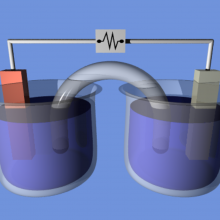
23:18 - How are new batteries developed?
How are new batteries developed?
with Kristin Persson, the Lawrence Berkeley National Laboratory in California.
Kristin - My name is Kristin Persson, I work at the Lawrence Berkeley National Laboratory in California. I look at materials and I try to predict their properties from quantum mechanics in a computer and see whether they would work well for batteries. While we have Lithium ion batteries that work today, they're too expensive, or they have too little energy density - depending on how you want to see it - to be viable as electric cars for the average person.
Chris - So although batteries have gotten enormously better, like modern mobile phones which draw enormous current compared with ten years ago, a car is a totally different kettle of fish?
Kristin - Yeah, you need a ton more energy. If you look at the battery packs for electric vehicles, the whole car is stuffed with them. They have a problem finding space for these things, they have to go under the seats. So they're huge and if we could find materials that are smaller, cheaper or have more energy-density per volume, that would help.
Chris - And how are you trying to do that?
Kristin - I try and design new materials in the computer, and I can calculate the properties that are important for battery electrode materials, like voltage, capacity, stability and safety. I can calculate all those properties and then screen the materials and find the ones that would actually work well as electrode materials and ask my colleagues to try and make them.
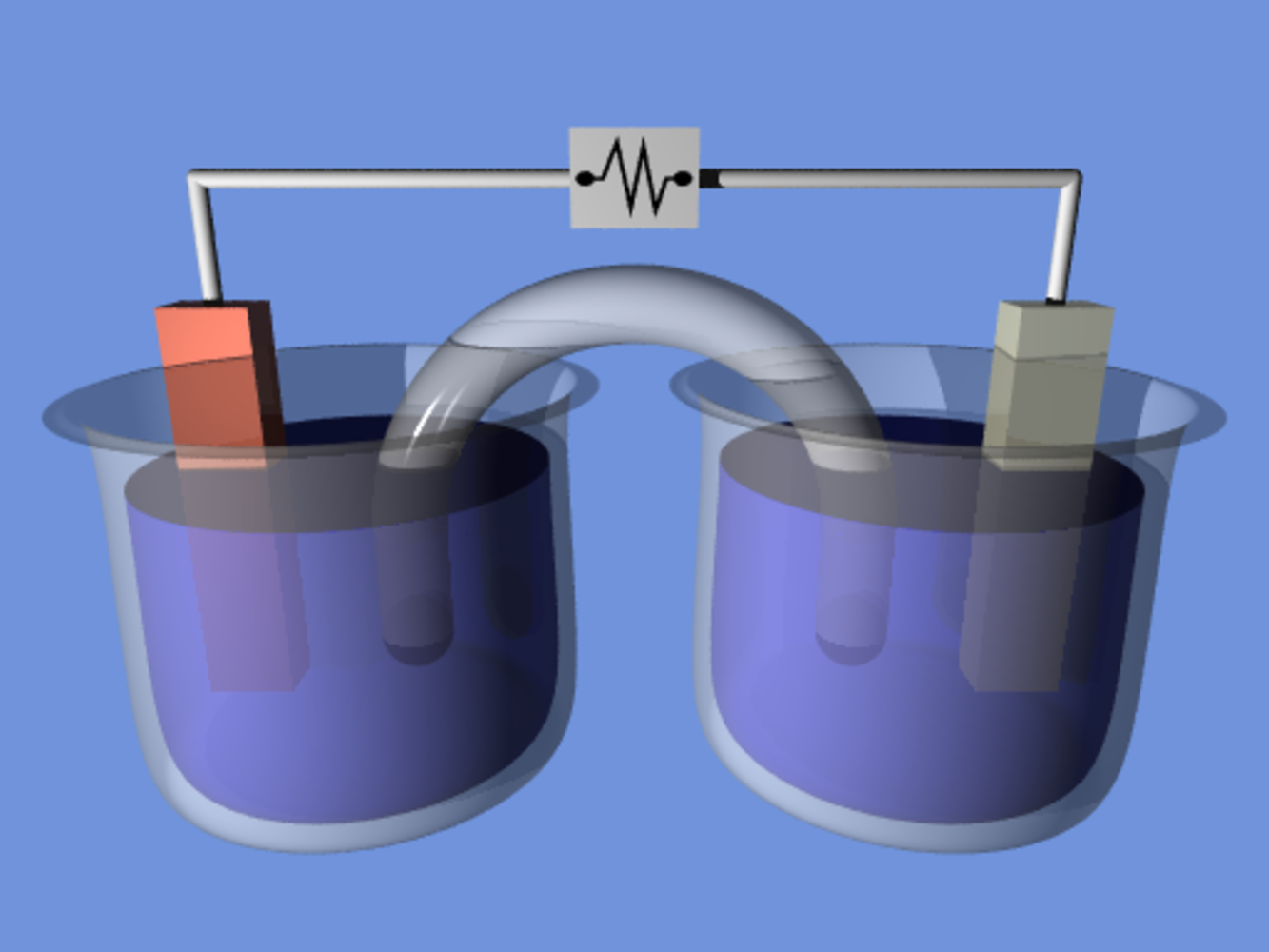 Chris - So your work basically happens inside a computer. You are taking molecular or ionic structures and asking: how would this perform under various conditions?
Chris - So your work basically happens inside a computer. You are taking molecular or ionic structures and asking: how would this perform under various conditions?
Kristin - Exactly.
Chris - And you're trying this for lots of different chemicals, you basically pluck off the periodic table and say, what combos are going to give the right voltages and energy densities?
Kristin - Yeah and we partly use our own intuition but we also have a huge database of more than 100,000 computed structures and we can data mine that to see which structures are usually stable, which elements give good voltages etc, so we can filter down the different possibilities
Chris - Have you come up with any promising ones?
Kristin - We have several that were predicted to be promising and people in our lab have actually been able to make a few of them, but they're not performing as well as we would like them to. So they're not contenders yet, although they are performing as battery materials
Chris - What do you think is wrong?
Kristin - It's hard to know. If you had asked Professor Goodenough from Texas what was wrong with Lithium ion-Phosphate when he first found it he would have said, "ugh, everything. It's a bad material." It takes a long time to optimize these things. It could be anything from interaction with the electrolyte, surface properties, it could be that some of the things that we predict, like phase stability as you move lithium in and out, is not quite as well characterised as we would like it to be.
Chris - This sounds very reminiscent of the way in which drug discovery and design has gone. In the old days people used to do a bit of clever chemistry, make something, and then inject it into a rat to see what happens. These days people take molecules that they know could exist, they screen them against targets - things that we know about various cells and so on - and pick out the juicy looking ones, give them to a chemist to make and then try them. So this is sort of the battery equivalent to making Viagra or something.
Kristin - You're exactly right. We got the idea from the drug discovery process and we're actually calling our giant project, 'the materials genome'.
Chris - And do you use the same sort of approach they do then?
Kristin - In a sense yes. We compute everything that we know in nature and the properties of these materials. Then we data mine to see which ones actually correlate with good behaviour for what we're looking for.
Chris - How long do you think it will be before you come up with something that will mean my phone weighs a good deal less and can do a good deal more?
Kristin - That's a good question. So on average it takes about 15 years for a material to hit the market after its discovery, so if I found something today it would still take about 15 years for you to have it in your hand.
Chris - Even so we've still come a long way since the Voltaic pile, that's for sure. That was Kristin Persson from the Lawrence Berkeley National Laboratory.
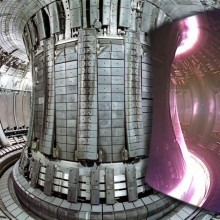
27:37 - The ITER project, using nuclear fusion to create energy
The ITER project, using nuclear fusion to create energy
with Brad Nelson, chief engineer for the US branch of ITER
Chris - The world is united behind a project called ITER, the International Thermonuclear Experimental Reactor. Later this decade, it will attempt to recreate on earth the physics that powers the sun. The aim is to harness fusion power to produce electricity. Brad Nelson is the chief engineer for the US arm of the project.
Brad - The nuclear power stations we have now are based on the fission process. Heavy nuclei are split to release energy - the famous e=mc2 equation. Whereas fusion occurs on the sun where lighter elements are fused to form heavier elements and to give off power.
Chris - I suppose one of the problems though is that the sun is a million earths - the temperature at the centre is really quite high, the pressure is huge, and we're trying to do what the sun does on the scale of a star on the surface of the earth.
Brad - That's correct. What the Sun uses is gravitational attraction to confine the fuel to create the very high densities you just mentioned. But in reality the temperatures in 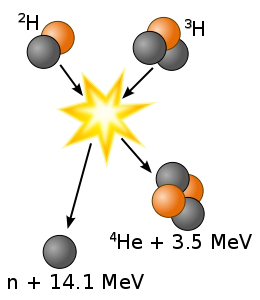 the ITER reaction will be higher than they are in the sun - about 200 million degrees.
the ITER reaction will be higher than they are in the sun - about 200 million degrees.
Chris - This is to make the particles move a lot faster so that they hit each other harder and can get closer together. So you'll get those nuclei to fuse together which the sun does, as you say, by squeezing things very hard with gravity. We've got to do it another way.
Brad - That's correct. We use a plasma, which is a conducting, high temperature gas that we then confine with magnetic fields, certainly at 200 million degrees there is no material that will withstand that temperature so we must be very careful to keep the plasma away from any kind of wall.
Chris - So talk us through the process. What chemically will go into the reactor? What will be the process that happens? What will come out, apart from heat and energy?
Brad - The fuels that we will use in the ITER reactor are deuterium and tritium, they're heavy isotopes of hydrogen. Deuterium is found in sea water. We've heard of heavy water, well deuterium is the hydrogen isotope in heavy water. Tritium is a more unstable isotope which has to be created. In this case, if you bombard lithium with neutrons you can create tritium. And so in future reactors where we want to be self-sufficient in fuel we would have a tritium breeding blanket around the outside of the plasma where neutrons would interact to create tritium and the process would be self-sustaining.
Chris - And the tritium and the deuterium are fused together to make what?
Brad - In the reactor the tritium and deuterium are fused together making an alpha particle, or a helium nucleus, which has a fair amount of energy, and then a high energy neutron - 14 MeV neutron. So it's a very energetic neutron, and has some issues with the damaging materials. So materials issues are a big problem, and what ITER's trying to discover is whether the alpha particle, or helium nucleus, which is charged, will remain in the plasma long enough to give off its energy and heat the new fuel coming in and keep the reaction sustained.
Chris - Can you then talk us through exactly how it will work? So, if I were to set foot in the core of what will be the core of the ITER reactor in the future, what will I see?
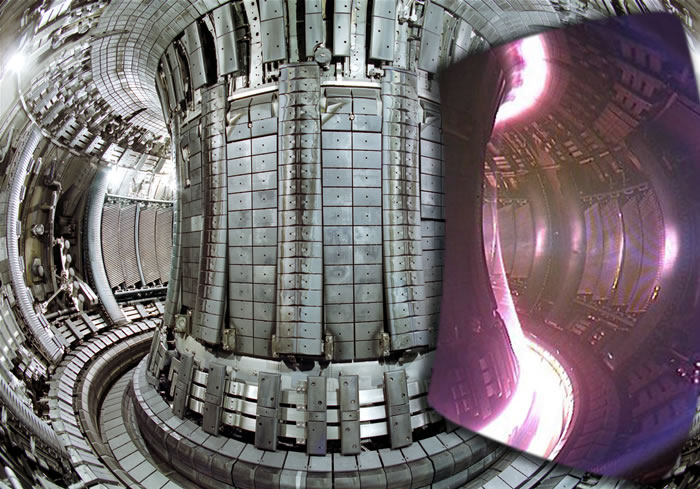 Brad - The ITER is what's called a tokamak, which is a toroidal magnetic device. So imagine a doughnut which you surround with very strong electromagnets, creating a very high electromagnetic field. You first create a plasma by heating up some very rarefied gas inside the doughnut, ionising it, and then you gradually induce a very high current in the gas. In this case, 15 million amps. So we have a plasma, with 15 million amps, inside a very strong magnetic field, and this provides a magnetic bottle if you will that contains the plasma, keeps it in the core of the reactor and away from the walls. We then continue to heat the plasma until it reaches the thermonuclear conditions which allow the fuel to fuse. The neutrons come out, the neutrons hit the wall, and we absorb the power in the walls, carry the heat away - in water in the case of ITER, but in future reactors it would probably be helium. And that power would be used to run turbines and generate electricity.
Brad - The ITER is what's called a tokamak, which is a toroidal magnetic device. So imagine a doughnut which you surround with very strong electromagnets, creating a very high electromagnetic field. You first create a plasma by heating up some very rarefied gas inside the doughnut, ionising it, and then you gradually induce a very high current in the gas. In this case, 15 million amps. So we have a plasma, with 15 million amps, inside a very strong magnetic field, and this provides a magnetic bottle if you will that contains the plasma, keeps it in the core of the reactor and away from the walls. We then continue to heat the plasma until it reaches the thermonuclear conditions which allow the fuel to fuse. The neutrons come out, the neutrons hit the wall, and we absorb the power in the walls, carry the heat away - in water in the case of ITER, but in future reactors it would probably be helium. And that power would be used to run turbines and generate electricity.
Chris - It's being built in France, isn't it? But it's an international project?
Brad - Yes, it's an international project. Roughly half the world's populations are living in countries where the government is subscribed to build ITER. So the European Union is involved, Japan is involved, the Russian federation, the US, Korea, China, and India are all involved in this effort.
Chris - And dare I ask the price tag?
Brad - It's hard to say exactly because the countries are providing the equipment for the project as an in-kind contribution. So, rather than all send money and have the project buy the equipment, the parties to the agreement are actually sending the equipment itself. So the exact cost is hard to say, but in round numbers it's something around 20 billion dollars.
Chris - Two or three LHCs?
Brad - I suppose that would be right, yes.
Chris - So, not cheap. But if it does deliver then the future energy savings will be huge. That was Brad Nelson, ITER's chief engineer.

33:05 - Storing energy using nanopillars
Storing energy using nanopillars
with Sang Bok Lee, Professor of Chemistry at the University of Maryland
Sang - My name is Sang Bok Lee, and I'm a Professor of Chemistry at the University of Maryland. Basically this gadget is a very thin film and inside that thin film - about 20 microns thick - there are millions and millions of nano-scale pillars. And each individual nanopillar is composed of two different materials as coaxial structures.
Chris - So one inside the other - you've got one wrapped around the outside of a chemical inside. So what's on the inside of these pillars?
Sang - So the inside core is manganese oxide, which is a famous battery material. And the outer shell material is a conductive polymer. So each material has its own function. They can help each other synergistically to maximise energy storage properties, in this case.
 Chris - So how does it actually work as an energy storage vessel? How do you put energy in?
Chris - So how does it actually work as an energy storage vessel? How do you put energy in?
Sang - Basically, how I put the energy in is to apply a voltage, just like charging a battery.
Chris - And chemically, when you connect that to a battery, like you did with your stopwatch for 5 seconds [in a demonstration earlier], what did the current flowing into the thin film to do it?
Sang - Right, applying the voltage will oxidise these materials, changing their oxidation state to a different state. After you disconnect this charging process, now it has a stored electrical energy here. Now if you reconnect to another device like the stopwatch here, it releases its stored charge to the device, and makes the device work.
Chris - What are you trying to solve by doing this like this? Why do you think these are a useful design?
Sang - An important thing of the design of this device is the high power. As you know, the lithium ion itself has a high energy density, but pretty low power density. But we need high powers these days. For example, renewable energies like sunlight or wind-turbines - they produce energy intermittently. So if you use just a lithium ion battery to store the energy from the wind turbinethen you actually lose a lot of peak spike energy- you cannot store it all. However, using a high power device like this one, you can actually scavenge all those peak power energies from the wind-turbine or solar cells and so on.
Chris - So how are you actually doing that? What is it about this design that enables you to do that?
Sang - Things. One is it's nano-scale. Nano means it's really tiny so that ion transport through the nano-scale structures is really fast. Fast means high current, so high power. The other thing is two different materials, so each material has their own function and they help each other synergistically to deliver these fast ion and electron transfers.
Chris - So when you describe this as a coaxial structure with this conducting polymer around the manganese oxide in the middle, because they are very small scale structures you've got lots of surface contact. Is that how you were able to get these very high currents flowing so that you can have this peak power?
Sang - That's correct, pretty much. About 70, maybe 80% correct. Another feature is since the total diffusion or transport path length of these ions in the nano-scale is really short, so it happens really quick. That's why.
Chris - I see the stop-watch that you're powering with this from a 5 second charge up of this thing that just looks like a microscope slide - very very thin - is still running. Obviously that's a very low current device. But how long till you can scale this up so you can run big devices like a laptop rather than a stopwatch with it?
Sang - Right now, as a chemist, we haven't thought deeply about the larger-scale. However we're working on how we'll make this device scale up. The size we are imagining is about 1 metre by 1 metre, so it could easily deployed to large powered devices.
Chris - How do you make this? Is it easy?
Sang - It's very very simple. We're using a very thin membrane that has cylindrical pores - self aligned. You fill up the material inside the pore, then you just remove the template, then you have billions of pillars on the surface.
Chris - So it's very simple to fabricate - you could scale this relatively easily?
Sang - I guess so
Chris - And, timescale?
Sang - Right now, we're in the process of forming a company, so I will say 5 years.
Chris - Sang Bok Lee. And that stop-watch was still running 10 minutes later following a 5 second charge of that tiny battery that literally resembled a piece of film.
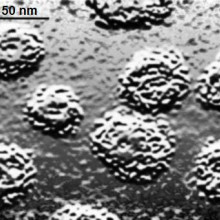
38:42 - A Viral link for Throat and Mouth Cancer
A Viral link for Throat and Mouth Cancer
with Maura Gillison, Ohio State University
Chris - Traditionally, mouth and throat cancers have been largely associated with using tobacco products. But in the last 20 years the incidence of these diseases has doubled, especially amongst young people. Scientists studying the tumours have found an unexpected change - over 90% of them contain the genetic signature of the Human Papilloma Virus - HPV, which is more commonly associated with causing cervical cancer in women.
Scientists think that people having oral sex is spreading the virus to the mouth where it triggers tumours in the same way that it does in the cervix. Maura Gillison from Ohio State University was one of the first people to spot this trend...
Maura - In 2000, we published the first compelling research that HPV is a cause of oropharynx cancers. In 2007 we published a study in which we compared the behavior of people with cancers to the behavior of people without cancers. And we found that oral sexual behavior was associated with risk of oropharynx cancer. In that study we estimated that an individual with an oral HPV-16 infection had about a 15-fold increase in risk for oropharynx cancer. The fact that most of these cancers occur in men, we're trying to increase awareness that HPV is not solely a problem for the women of the world. The men of the world need to wake up and recognise they are also at risk for cancers caused by HPV infection.
Chris - So the same forms of HPV, because it's quite a big family of viruses, can 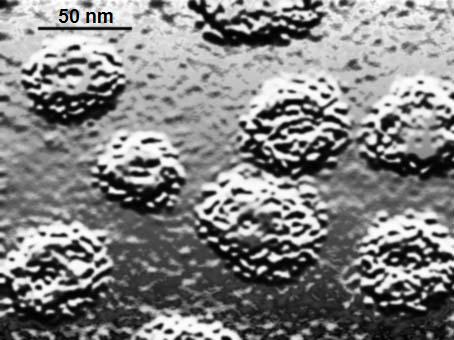 translocate from one bit of the body, be applied to another and be equally pathogenic there?
translocate from one bit of the body, be applied to another and be equally pathogenic there?
Maura - HPV is a very unusual virus in that it doesn't travel through the bloodstream. It's spread by direct human to human contact. So an individual can become infected in their inner genital region from an infected partner and depending on their behaviors, that infection can also be transferred to the oral cavity.
Chris - What's the evidence that these tumours are now being caused by HPV and weren't before?
Maura - That's a very good question. What we know from the United States is that as of about 2005, 64% of oropharynx cancers are caused by HPV infection. We also know that in the United States over the last 20 years the incidence of these cancers has increased by approximately 200%. We do not know, through direct measurement of tumours over calendar time, that that increase is caused by HPV in the United States. However, our colleagues in Scandinavia have shown from their tumour banks, that in the 1970's, about 23% of tonsil cancers in Stockholm had HPV in them and by 2005 that had increased to 93%. So a 70% increase over a pretty short period of time.
Chris - What if something else was making the cancers happen in the mouths of the individuals who are affected and those cells, being abnormal, are more vulnerable to getting infected with HPV? If people are just having more oral sex which is transmitting it, maybe the effect you're seeing is just because the HPV sees more cells it can infect so you detect it?
Maura - I think the question you're asking me is, is there any evidence that HPV is there but not really the cause? We've been able to demonstrate that the HPV is very specific to the tumour and the tumour and the virus have what's called a clonal relationship. If you look at each tumour cell, it has the HPV in it and it's often integrated into the genome and integrated in the same place, indicating that there was one preceding event and then that clonal outgrowth turned into the tumour. We can look at it also visually, because we've now developed very sensitive techniques for looking actually for the presence of the virus specifically in a tumour and we can create these beautiful pictures of the pathology showing HPV in the nucleus of each tumour cell and not anywhere else in the surrounding normal tissue. So it's now accepted that the virus is indeed present in the tumours, its causal and its not just a passenger or coincident infection.
Chris - Why has the rate gone up so much in men but not in women?
Maura - That is the multi-million dollar question of the hour. We really don't understand why that is. We do know from women that hormonal influences do dramatically affect what happens to an HPV infection in the inner genital canal. So given gender is really the most profound hormonal difference in humans, we really do wonder whether or not the natural history of infection may be different by men and women. The alternate explanation is that sexual behavior differences in men and women may account for it. In support of that are all of the studies we've done to date looking at infection. Men have about a 3-fold increase in risk of oral infection compared to women and that's about the ratio of men:women with cancer, 3:1.
Chris - Do you think men being circumcised makes a difference? Because it protects the female partner against cervical cancer, so if the person is shedding less HPV because they're circumcised, it might mean their partner is less exposed?
Maura - That's a great hypothesis. It's clear from research now, both from randomised controlled trials and observational studies, that men who are circumcised have fewer infections and are less likely to transmit those infections to their sexual partners. But all of those outcomes have been through genital infection. We don't yet have any data showing that women who have partners who are circumcised versus those who are not are at reduced risk for acquiring an oral infection while performing oral sex on either a circumcised or uncircumcised man.
Chris - What about prevention? You've identified there is a problem. We can screen for these viruses to a limited degree. What about the vaccines and things like that? Are we in a position to do something about this?
Maura - I've been very interested in trying to find out if the currently available HPV vaccines could prevent oral HPV-16 infections. No one in the field believes that you can get an oral cancer caused by HPV-16 without having a preceding infection. So, if you could demonstrate that the vaccines were effective in preventing an individual from acquiring an oral HPV-16 infection, then its logical to believe then that that person would be prevented against oral cancers. Unfortunately those studies that have been planned were cancelled. It was a business decision on the part of the vaccine manufacturers. So I think at this point, what we'll have to do is observe populations like in Australia where the government recognise these vaccines as potentially important as cancer prevention. They made a very aggressive decision to vaccinate boys and girls in schools and did so with tremendous efficiency. So now in the target age range about 80% of Australian girls and boys in the vaccine targeted age have been vaccinated. So I think at this point we're going to have to get information on how the vaccines might reduce oral cancer through passive observation over the next 15, 20, 30 years. Hopefully what we'll see in Australia is they've made an excellent decision for the prevention of oral cancers in boys and girls.
Chris - Let's hope so. Maura Gillison, from Ohio State University.
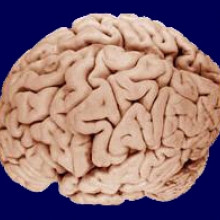
47:21 - Deep Brain Stimulation to Treat OCD
Deep Brain Stimulation to Treat OCD
with Ben Greenburg, Brown Medical School
Chris - OCD or obsessive compulsive disorder is an extremely disabling condition that causes sufferers to adopt futile behaviours like locking and unlocking doors multiple times, repeated hand washing or getting dressed and undressed several times before they can leave the house.
For people for whom behaviour therapies or drugs just don't work, previously there was little that could be done. But now doctors are reporting significant success using DBS - deep brain stimulation - which is carried out by implanting electrodes into patients' brains. Ben Greenberg...
Ben - The lesions and DBS for OCD that we've been working on affect connections  between the thalamus, which is a sub-cortical nucleus that does lots of things in the brain and projects throughout the pre-frontal cortex. We're particularly interested in connections between the thalamus and the bottom part, the ventral part of the pre-frontal cortex, which lots of evidence suggests is important in OCD.
between the thalamus, which is a sub-cortical nucleus that does lots of things in the brain and projects throughout the pre-frontal cortex. We're particularly interested in connections between the thalamus and the bottom part, the ventral part of the pre-frontal cortex, which lots of evidence suggests is important in OCD.
Chris - And you can either cut that region, or you implant these electrodes that will enable you to do deep brain stimulation. Does the deep brain stimulation effectively render that area of brain inactive then?
Ben - The truth is that we don't know. The original idea, both in movement disorders - where about 70,000 patients worldwide have had DBS - and our work in OCD, was that DBS represented some kind of functional lesion. It blocked transmission. That doesn't seem to be right. It's probably better to say that DBS may bias activity in pathways. Bias what kinds of information they're likely to carry. The other thing that DBS may do is affect different nodes of the circuit so that they're actually released from abnormal inputs. Lesions may do this too. One particular region that we're interested in may have to do with the mechanism of action of behaviour therapy.
Chris - Do you have to put the electrodes on both sides of the brain, or do you just stimulate one region?
Ben - We typically put them bilaterally, both sides of the brain, although it is not uncommon for patients to have the best response when we only use one of them. We're trying, with colleagues in an NIH-funded Conte Centre, which includes an anatomist as the head of this project, to really understand exactly where the most effective stimulation is, and then to understand what the network of that stimulation is. So where do you need to go to get where you need to?
Chris - How do you tune it up so that you know whether the patient is responding or not? How do you know how hard to stimulate?
Ben - The first thing you do is try to avoid side effects. And then the second thing you do is look clinically - it's not as nice as stimulating for tremor where you can see the tremor stop right in front of you. What we can see is patients changing in subtle ways, we want them to be subtle, in terms of their affect. So they will look like they're more present, affectively, they'll look calmer, they'll interact with you more, they'll make better eye contact, they'll be more spontaneous in their speech. And those kinds of very non-specific effects seem to be predictive of a good response to DBS for OCD. That relates to another thing that's really quite interesting - we do DBS at exactly the same target for major depression without OCD. So it looks as if a lot of the treatment effects may be non-specific at the behavioural level, which is also true, I think, in terms of the effect of anti-depressants which we give to all of these kinds of patients.
Chris - And when you're running the DBS, does that have to continue indefinitely for the person to continue to derive some kind of benefit, or is there some kind of brain re-wiring that happens around the stimulus, so if it is subsequently withdrawn, then the symptoms stay in abeyance?
Ben - It looks as if you need it indefinitely. We had hopes that if someone then successfully did behaviour therapy after DBS, that we would be able to withdraw the stimulation. In fact, we did that and we reported on that in a couple of patients. One actually maintained his gains for about six months with DBS off, another probably for that much time or maybe even longer. But ultimately in the case we followed, DBS needed to be turned back on, or the illness re-established itself.
Chris - Practically, do you have to have wires coming out of people's heads and that kind of thing in order to make this happen, or is it very self contained?
Ben - It's like a cardiac pacemaker really, everything is under the skin. You put the pacemaker typically in the chest, but instead of the wires going to the heart they go to the brain. Under the skin; through holes in the skull; into the brain.
Chris - Ben Greenburg, from Brown medical school.

52:20 - Not Enough Nitrogen to Feed the World
Not Enough Nitrogen to Feed the World
with Professor James Galloway, University of Virginia
Chris - Finally, to the most abundant stuff in the atmosphere, nitrogen, and why turning it into fertiliser to feed a growing population is also a recipe for trouble. Jim Galloway.
Jim - All life needs nitrogen in the form of amino acids. We get our amino acids by eating food. If we don't have amino acids, we can't survive, no other species can survive. And so the question is; where do you get your amino acids? One hundred years ago, there was enough nitrogen naturally occurring in the environment for humans to grow enough food. But in 1898, Sir William Crookes, the president of the British Association for the Advancement of Science, in his annual address, said to the assembled members that there was not enough nitrogen available to feed the civilised world. By "civilised world" I'm sure he meant the UK, maybe not the US at the time!
 Chris - Not the colonies...
Chris - Not the colonies...
Jim - Not the colonies! And so that was over 100 years ago, and it was just to set the stage for things to come, because we just didn't have enough nitrogen. That led to the invention of the Haber-Bosch process by Fritz Haber and Carl Bosch.
Chris - I think the world war could have helped there as well...
Jim - That's fascinating. Vaclav Smil has written an excellent book called "Enriching the Earth", MIT press, 2001, where he talks about Haber and Bosch and how their ardent nationalism for Germany really drove them to first invent the process and then scale it up to an industrial level where they could provide munitions for Germany because, of course, Germany was blockaded.
Chris - But this, of course, enabled them to make ammonia, which is the starting material for all of this fixed nitrogen, all of these fertilisers and other compounds we want to make from nitrogen. That meant the farmers could then begin to put the stuff on the soil. But therein the rot has set in since, because now we're in a position where we're putting tonnes of the stuff all over the place.
Jim - Yes, you're absolutely right, the Haber-Bosch process converts N2, two nitrogen atoms stuck together in the atmosphere, into ammonia. It is then used for fertiliser, it's used for some other things too - like bombs - but mostly fertiliser. We needed it because there's too many people eating too high up the food chain to use just natural sources of nitrogen. Now, we're making about one hundred million metric tonnes of nitrogen fertiliser a year, globally. The good news is it's feeding a large percent of the world's population. The bad news is that much of it, some would say most of it, is lost to the environment after the food production process. This is contributing to smog, to acid deposition, to global change, to dead zones on the coast, to stratospheric ozone depletion... A list of environmental issues all connected together because literally one atom of nitrogen put in the atmosphere, made active by humans, will contribute to all of those problems, in sequence - It's called the nitrogen cascade.
Chris - So, of the amount of nitrogen we put onto a field, how much actually goes into the plant and therefore into my mouth, and your mouth, and how much doesn't? What fraction goes in each direction?
Jim - If you're a vegetarian, then the amount of nitrogen that is applied, about 20% would get into your mouth.
Chris - Gosh, 80% goes into all these other areas, it causes seas to have dead zones and so on - that's a worry.
 Jim - And if you only eat meat, it's around 10% that goes into your mouth. The other 90% is lost during the food production process. That's a major issue, and there's various points along the food production pathway where nitrogen is lost. Also, there are points along the food production pathway where you can control the losses. So this is not just a bad news/bad news story - this is a story that's sying "we need to take some action here." There are places where we can take effective action, and this should be done not just in the developed world, but also especially in the developing world.
Jim - And if you only eat meat, it's around 10% that goes into your mouth. The other 90% is lost during the food production process. That's a major issue, and there's various points along the food production pathway where nitrogen is lost. Also, there are points along the food production pathway where you can control the losses. So this is not just a bad news/bad news story - this is a story that's sying "we need to take some action here." There are places where we can take effective action, and this should be done not just in the developed world, but also especially in the developing world.
Chris - Do you think it's going to be effective to go up to people in Indonesia and China and say "you can't use all this fertiliser because this will be the onward consequence for the environment". We haven't got much evidence that they really care about the environment now, so why should they care about this?
Jim - Let me break that question up into two parts: For the developed countries, I think there's a strong foundation of environmental awareness that either exists or can be built upon; For the developing countries, you can tie directly the losses of nitrogen to the environment of those countries, to decreased ability to grow food, and decreased ability to use their coastal zones to raise biomass. And so, I think showing people that "if you don't control nitrogen issues, your air is going to get worse, you're going to have huge human health impacts, increased losses of nitrogen in the coastal zones, and it's going to impact the very fabric of your human ecological health.
Chris - So, what could the average person do to make the biggest inroads to reducing their nitrogen footprint like this?
Jim - The first is to eat only the protein that you need. The USDA recommended level is 3kg of nitrogen per person per year, the average American eats about 5kg. And so, just by decreasing that 5 down to 3 - smaller portions of steak, one egg instead of two eggs - it's not rocket science, as they say - that would decrease the amount of nitrogen lost in the United States by almost 50%.









Comments
Add a comment